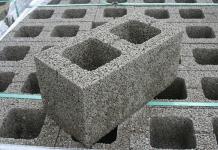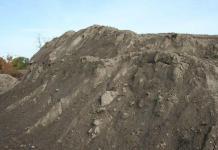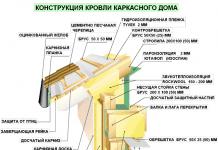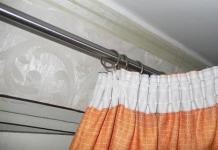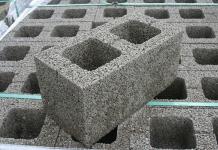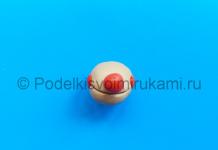With a high percentage of clay content. Depending on the composition, it is divided into several varieties. The fertility of such soils is quite high. But there are some features of construction on loam soil. Its qualities can affect the strength of the foundation of the future home. And in order to avoid negative consequences, you must first conduct a thorough analysis of the land.
Soil varieties
There are many types of soil. These include clean sand or clay, the processing of which, as a rule, causes many difficulties for gardeners. Sandy loamy rock also needs improvement: it is thoroughly fertilized before planting. But it is actively used in construction, especially in the construction of pavement.
Rocky soils are ideal for engineering work. However, they are quite rare. As for loam, it is a non-rocky type of soil. For the high content of clay, it is also called bound.

Also well suited for the construction of monumental structures and small buildings. However, the foundation of these buildings may be susceptible to destruction due to the increased moisture content. Therefore, it is necessary to accurately study the composition of the loam and determine the further procedure for construction.
Types and characteristics of loam
A large number of territories of the Russian Federation are located on loamy soil. Loam is of three types. They are distinguished depending on the ratio of sand and clay present in the composition. Light - more crumbly and less dense, rolls with difficulty. Its coefficient of plasticity is not higher than twelve. There is less sand in the heavy loam, there are large lumps of clay.

There is also an intermediate option between these two. In this case, the soil can be rolled into a small cord. But due to the low moisture content, it will soon fall apart.
According to a different classification, dry loam and wet loam are distinguished. In silty, the percentage of sand particles does not reach forty. This is its difference from sandy. The density of loam depends on the total moisture content and varies from 1.8 to 2.1 tons per cubic meter.
Conducting an analysis
There are several ways to determine the composition of the soil. The simplest is to visually inspect and take a small amount of land in hand. The degree of friability is determined, attempts are made to roll the soil into a lump or cord. Attention is drawn to the viscosity, stickiness, the presence of small particles, dust in the mixture. The increased content of moisture and clay will lead to the fact that during frosts the state of the soil will change. And since winters in Central Europe can be cold and long, you need to try to build the foundation of the building, taking into account possible threats and according to all the rules of construction.

Another good way to find out the consistency of loam is to place a small amount of it in a container of water. It is desirable that the vessel is transparent. The liquid is thoroughly mixed. After some time (no earlier than 15 minutes), you can observe the formed precipitate. Sand particles will remain at the bottom of the container, while clay will float to the surface. The total composition of the soil is determined by the approximate amount of substances per eye.
If accurate data are needed, then you can use the services of special chemical laboratories.
Preparation
It is advisable to check the land in the spring season. It is then that the groundwater level becomes higher and closer to the surface. In some cases, the area is flooded, which indicates unfavorable terrain. Perhaps there is a swamp or a large reservoir nearby, which means that the water level will rise annually and have a destructive effect on the foundation.
On the building plot, choose the most even and dry place. Several wells should be drilled from different sides. This will help to study the soil in more detail, its uniformity and moisture content. After the study, they begin planning the development. Construction methods depend on the financial capabilities of the owners, their wishes and the condition of the land.
Foundation construction
Having decided on the project of the structure, they begin to lay the foundation. In some cases, before building a foundation on loam, the soil under it is covered with a small layer of wet sand. This will protect the concrete slabs from severe frost damage. The foundation is laid to a great depth.

To do this, you need to know what is the height of soil freezing in winter in a given area. If the plate is located deeper, it will not succumb to displacement. It is also important to avoid groundwater below the building.
When all the materials are ready for construction, the marking and preparation of the site is carried out. The layer of vegetation is removed, the area is carefully leveled. The next stage is the installation of pillars at some distance from the future home. Dimensional boards are attached to them. All dimensions must be indicated clearly and strictly in accordance with the project. If the humidity is high, drainage must be done. The method consists in installing trenches (pipes) near the foundation, where excess water will drain.
Other technologies
There is another option, how to avoid the consequences of building on loamy soil. This is the so-called "floating foundation". It consists of the most durable solid plate. Another type of construction is also used - a lattice. A thick layer of sand or gravel is laid under them. As a result, after frosts, the soil begins to rise, and with it the base of the building rises. This deformation is imperceptible, and strong thick concrete slabs do not break or crack. The only drawback of this method is that the construction will take quite a lot of time and patience.

In order not to be afraid in the future for your home, you can use the TISE technology. She is loved for her low cost and the ability to put a foundation on absolutely any soil. Wells break through to a great depth, and supports are installed in them. It is important to reinforce the system. Then the structure will be as strong as possible and able to withstand any structure on itself. This option is ideal for areas with groundwater near the surface.
Soil treatment and improvement
Loam is not only the soil on which you can build a house, but also used for planting. In this case, you can use organic fertilizers or add sand. If the clay content is increased, then earth should not be mixed in: it will only add moisture and stickiness. You need to try to loosen the landing sites more often. Gardeners even make some protective structures against "trampling down" the soil. It can be wooden boards, broken bricks, the remains of cut plants.
The beds should be raised a dozen centimeters, since after rains deep puddles can form that do not dry out for a long time. Sand and manure are also added to avoid problems. Excess sand in the garden is also not recommended: it will harm the vegetation.
Possible consequences
A thorough study of the soil and the choice of the type of foundation will help to avoid mistakes during construction. The most common is tape, but its use on loamy soils should be carried out with caution. It is important to consider the level to which the ground can freeze. The foundation should be located a few tens of centimeters lower. Otherwise, in a few years, after the change of seasons, cracks will appear on the concrete slabs. Such a house would be unsuitable and even dangerous for habitation. Often the repair of such a structure is impossible.
The characteristics of the soil determine not only the design of the foundation-basement part, but also the ability to build a house in general. It is known how problematic it is to build something, pile it on quicksand, on peat bogs, where a deceitful substrate is hidden under the surface layer of clay-like sediments.
During construction, stage 1 of the work is to determine the characteristics of the soil. And also to find out the water content of the site, the depth of freezing, the likelihood of frost heaving, and as a result, choose the most optimal foundation design.
To create an underground part of the house according to the principle of "with a margin of safety" is a great loss to the financial and economic situation. After all, a 2-3-fold increase in heavy filling materials may “seem” normal.
The correct direction of overcoming production complications is research and study of the soil, determination of characteristics. But is it possible to do this "by eye" with your own hands?
What's in the pit
Even a person far from geology will be able to distinguish sand from sandy shale - a very hard rock. These are obvious clear differences.
But difficulties arise when it is necessary to determine the varieties of clay soils.
What is in the pit - clay, loam or sandy loam? And what is the percentage of pure clay in such soils?
The presence of clay and dust-like particles determines the tendency of soils to heaving.
Next, we consider the possibility of independently determining the types of clay soils. You can use GOST 25100-95 “Soils. Classification". Everything is painted there from A to Z. But the practical benefit is still not great. Since, for example, the parameter "tensile strength" cannot be measured without a laboratory.
But first, create a sufficient depth of the pit to take the soil lying both opposite the walls of the foundation, which is very important (lifting forces directed tangentially to the walls), and under the sole
Plasticity is an important characteristic
The most important characteristic of clay soils is the "number of plasticity". It characterizes the ability of soils to hold water. The plasticity number for clay soils has the following values:
- Sandy loam - 1 - 7
- Loam - 7 - 17
- Clay - >17
The more plastic material, the more water in it, and it is better molded - sticks together, retains its shape integrity even in the form of thin figures.
But the plasticity number is the result of laboratory research.
Let's try to determine the type of soil in the foundation pit without resorting to a finite plasticity number, but using visual differences.
What to do to determine the qualities
1. We rub a piece of soil in our hands, try to determine by touch - if there are sand particles in it. Based on our feelings, we conclude:
- when grinding, sand is not felt - it is clay;
- when rubbing, sand is felt, although the soil looks like clay - it is loam;
- the soil is rubbed into sand and dusty particles - this is sandy loam.
2. With palms, we roll a lace and other figures out of the ground:
- clay - the cord rolls easily, and it is very thin. After that, we make a ball out of the cord, flatten it - the edges of the ball did not crack during deformation;
- loam - the cord rolls, but the edges of the ball cracked when it was squeezed;
- sandy loam - the cord rolls with great difficulty, or does not roll at all.

More ways to determine soil
For those who want to replace geological studies with their own hands, there is a table - Methods for determining the soil - here it is necessary to roll a thin cord, a ball out of the soil, determine the plasticity and inclusion of particles by touch, look at the composition with a magnifying glass ...
With each sample taken from a certain depth of the pit, several manipulations must be done according to the data in the following table.


The described, not scientific, but practical method, is still very rude. The percentage of sand particles in the soil cannot be obtained by such methods.
The division of soils according to the number of plasticity and the percentage of sand particles is given in the table.

More information on the definition of qualities.

The method of separating sand from clay for studying the soil
You can manually separate sand from clay in a jar of water. And then measure the thickness of their layers with a ruler, which, in a rough approximation, will indicate the approximate percentage of clay from sand. You can fill your hand in such experiments if you repeat them many times, taking samples of obviously different soils.
The following is done. A jar of water is taken, soil is poured there and diligently chattered. After complete stirring, it is necessary to allow some time for the suspension to settle, sometimes for small particles it takes a very long time. Sand settles, forms a visible compacted layer below, and clay particles are buoyant, remain in the thickness or rise up.
By measuring the thickness of the visible layers at the top and bottom of the glass container, one can roughly judge the nature of the soil. Correlate these data with the above table values, and therefore give the soil its name and characteristics without waiting for laboratory analyzes.
Hello everybody!
I plan a 10x10 house with an attached 5x6 aerated concrete garage with brick cladding.
What foundation would be optimal, advise?
Geological surveys were carried out in relation to a part of the cottage village in which my site is located (300 meters away from the last well). Managed to get this info. Here she is:
EGE-1- The soil-vegetative layer is chernozem. Thickness from 0.8 to 1.0 m.
EGE-2– light, sandy, in some places very sandy (to sandy loam), brownish-yellow, from semi-solid to hard-plastic. Sole depth 1.1-1.7. Average thickness 0.4 m.
EGE-3– Sands are fine-grained, light yellow to whitish-gray (in the lower part), quartz, homogeneous, in places with a rare admixture of mica, slightly moist, of medium density, from a low degree of water saturation ( IGE-3a) to water-saturated ( IGE-3b). Up to a depth of 6.0 m, the sole was not opened. The incomplete average thickness is 2.3 m.
EGE-4– Light loam, silty, brownish-yellow, in places with red spots, from hard and soft plastic ( IGE-4a) - in the upper part, to fluid-plastic and fluid ( IGE-4b) - in the lower part, sandy in some areas, with the inclusion of gravel of carbonate rocks. The depth of the sole is 3.0 - 5.5 m. The average thickness is 3.3 m.
EGE-5– Sandy loamy, plastic. They occur in the form of lenses in the central and western parts of the work site (wells 1, 3). Sole depth 5.0m. The average thickness is 0.9m.
Within the area of cottage development, the waters of the Upper Quaternary alluvial aquifer, confined to the sands of EGE-4, were revealed. The depth of the groundwater level varies from 5.8 m in the western part of the site (well 7) to 2.4 m in the eastern part (well 1). Fluctuations in elevation marks vary from 111.1 to 113.1 m. The bottom of the aquifer is not exposed. In the eastern part of the site, the EGE-4 clay soils act as a local aquiclude, causing local level pressures with an amplitude of up to 0.8–1.7 m (wells 1, 4).
The horizon is fed by atmospheric precipitation and flood waters. The amplitude of seasonal fluctuations in the water level is about 1 m. Semenovsky (HERE, JUST HERE, I HAVE A PLOT!
SOIL PROPERTIES
EGE-2 -The loam is light, sandy, in some places very sandy (to sandy loam), brownish-yellow, from semi-solid to rigid plastic.:
- plasticity numbers - 8.20
- density (in compacted state) – 1.95 g/cm3
- humidity - 15.5%
- fluidity index - 0.41
- density of the skeleton (in compacted state) – 1.69 g/cm3
- coefficient of porosity - 0.55
- degree of humidity - 0.74
According to SNiP 2.02.01-83, in the condition of these soils with a moisture degree of more than 0.8, the strength and deformation properties can be characterized by the following indicators:
- deformation modulus, E - 25.0 MPa
- specific adhesion, C - 33.5 kPa
- angle of internal friction - 23.1 degrees.
Loams belong, according to the degree of frosty heaving, to the group of medium heaving.
IGE-3a -
- density (in compacted state) – 1.64 g/cm3
- humidity - 4.14%
- density of the skeleton (in the compacted state) - 1.57 g/cm3
- coefficient of porosity - 0.69
- degree of humidity - 0.16
- the angle of repose in the flooded state - 20 degrees.
- deformation modulus, E - 23.3 MPa
- specific adhesion, C - 0 kPa
- angle of internal friction - 30.4 degrees.
IGE-3b - The sands are fine, low degree of water saturation . According to the results of laboratory studies, it is characterized by standard values:
- density (in compacted state) – 1.97 g/cm3
- humidity - 20.90%
- density of the skeleton (in compacted state) – 1.63 g/cm3
- coefficient of porosity - 0.61
- degree of humidity - 0.90
- the angle of repose in the flooded state - 21 degrees.
According to SNiP 2.02.01-83, strength and deformation properties can be characterized by the following characteristics:
- deformation modulus, E - 20.6 MPa
- specific adhesion, C - 4.2 kPa
- angle of internal friction - 30.9 degrees.
According to the degree of frost heaving, sands belong to the group of practically non-heaving soils.
IGE-4a -. According to the results of laboratory studies, it is characterized by standard values:
- plasticity numbers - 8.49
- density - 1.98 g/cm3
- humidity - 19.13%
- fluidity index - 0.45
- density of the skeleton (in compacted state) – 1.66 g/cm3
- degree of humidity - 0.78
- deformation modulus, E - 3.3 MPa (at р=0.3 MPa)
- specific adhesion (in a water-saturated state), C - 43.3 kPa
- angle of internal friction (in a water-saturated state) - 19.3 degrees.
- relative deformation of subsidence - 0
According to SNiP 2.02.01-83, strength and deformation properties can be characterized by the following characteristics:
- deformation modulus, E - 23.9 MPa
- specific adhesion, C - 32.5 kPa
- angle of internal friction - 22.9 degrees.
IGE-4b - Loams are heavy, silty, hard . According to the results of laboratory studies, it is characterized by standard values:
- plasticity numbers - 9.35
- density (in compacted state) - 1.99 g/cm3
- humidity - 25.32%
- flow rate - 1.30
- density of the skeleton (in compacted state) – 1.55 g/cm3
- porosity coefficient - 0.68
- degree of humidity - 1.08
With a yield index of more than 0.75 according to SNiP 2.02.01-83, the minimum values of the indicators of strength and deformation properties of soils can be conventionally accepted:
- deformation modulus, E - 5 MPa
- specific adhesion, C - 12 kPa
- angle of internal friction - 12 degrees.
Loams are non-sagging and belong to non-swelling soils. According to the degree of frosty heaving, loams are classified as medium-heaving.
IGE-5 - Sandy loamy, hard to plastic . According to the results of laboratory studies, it is characterized by standard values:
- plasticity numbers - 5.02
- density (in compacted state) – 2.63 g/cm3
- humidity - 14.26%
- fluidity index - 0.52
- density of the skeleton (in the compacted state) - 1.78 g/cm3
- specific adhesion (in a water-saturated state), C - 11.3 kPa
- deformation modulus, E - 6.7 MPa (at р=0.3 MPa)
- coefficient of porosity - 0.48
- degree of humidity - 0.78
According to SNiP 2.02.01-83, strength and deformation properties can be characterized by the following characteristics:
- deformation modulus, E - 30.2 MPa
- specific adhesion, C - 17.7 kPa
- angle of internal friction - 27.9 degrees.
Sandy loams are non-sagging and belong to non-swelling soils. According to the degree of frosty heaving, sandy loams are classified as strongly heaving.
Loamy soils are found in almost the entire territory of Central Russia. Building a house on such soil requires a special approach. And the whole process begins with the construction of the foundation. Certain types of skeletons can be built on loam. Let's figure it out.
What type of soil is this and what kind of foundation should I choose?
Loam is a soil composed of sand and clay. And the latter is usually more in such soil. But sand can also prevail in this mixture (sandy loam). And if so, then the soil is more porous and its resistance will be less than with the predominance of clay in its composition. Dry loam - crumbly thanks to the sand filler. Wet loam is viscous thanks to clay, it is because of it that it freezes and expands in the cold season. Therefore, builders prefer to build foundations of the following types:
- Tape with rigid reinforcement. It can be done both below the soil freezing line (the ability to make a basement), and above (with the obligatory installation of drainage and insulation of the foundation of a non-massive structure).
- Monolithic reinforced slab. It is laid above the freezing level of the soil and is better known as a floating foundation.
- Pile type TISE. The installation goes to a depth significantly below the freezing level of the soil. It copes well with the functions assigned to it, but due to the high cost of construction, it must have an objective justification.
 The optimal time for geological exploration manipulations is spring. After all, it is during this period that groundwater is as close to the surface as possible. They can complicate construction work and even force you to reconsider your initial choice of foundation.
The optimal time for geological exploration manipulations is spring. After all, it is during this period that groundwater is as close to the surface as possible. They can complicate construction work and even force you to reconsider your initial choice of foundation.
On the territory, which is planned for building a house, it will be necessary to drill several wells. It is convenient to do this with a garden drill. Drilling depth - at least 30 cm from the soil freezing line. In the process, you can immediately evaluate and determine:
- soil composition;
- occurrence levels and their uniformity;
- soil characteristics.
More about each type of foundation
When you have a soil assessment on hand, you can begin to choose the type of foundation for the house. This should also take into account the original plan of your building, your financial resources and labor opportunities.
Strip foundation
 Foundation construction scheme on loamy soil
Foundation construction scheme on loamy soil This type of foundation comes in handy if the foundation of your house is brick. This makes the structure massive and heavy. And such a load must be supported by a stable frame. Therefore, deepening it below the freezing line of the soil, you can get not only this, but also a full-fledged basement. In fact, an invaluable room is the storage of products, and the wiring of communication lines, etc. Such a foundation can be built monolithic, or it can be assembled from blocks (reinforced concrete). In the first case, the structure must be well reinforced in order to give it rigidity and strength.
Plate
 A monolithic reinforced slab is an excellent solution to protect the house from heaving loam. It will protect it from distortion, cracks. It is installed even on very weak soils for houses, garages, baths, gazebos and other buildings. She has a "floating" effect - when heaving, she rises and after it stands in her original place. With it, the house and groundwater, which lie close to the surface, are not afraid.
A monolithic reinforced slab is an excellent solution to protect the house from heaving loam. It will protect it from distortion, cracks. It is installed even on very weak soils for houses, garages, baths, gazebos and other buildings. She has a "floating" effect - when heaving, she rises and after it stands in her original place. With it, the house and groundwater, which lie close to the surface, are not afraid.
The slab is poured into a dug pit. This is a reinforced monolithic structure. Its thickness can be different and is related to the planned weight of the house.
Piles TISE
 Increasingly, in individual construction, pile frames of the TISE type are performed. This eliminated the need to manufacture piles and transport them to the construction site. Yes, and driving their headframe also disappeared. For him, wells are dug in pre-selected places. Either iron pipes or concrete pipes are inserted into them. Their diameter should be equal to the diameter of future piles. A reinforced frame is installed in them and poured with a concrete mixture. After drying, the iron pipes can be removed or left. In the second option, this will make the piles much stronger, but at the same time it will significantly increase their cost.
Increasingly, in individual construction, pile frames of the TISE type are performed. This eliminated the need to manufacture piles and transport them to the construction site. Yes, and driving their headframe also disappeared. For him, wells are dug in pre-selected places. Either iron pipes or concrete pipes are inserted into them. Their diameter should be equal to the diameter of future piles. A reinforced frame is installed in them and poured with a concrete mixture. After drying, the iron pipes can be removed or left. In the second option, this will make the piles much stronger, but at the same time it will significantly increase their cost.
Special bends of the reinforcement are left on top, so that after weaving their reinforcing belt of the grillage. This will provide greater structural strength.
Measures to reduce the heaving of the site
The loam cannot not puff, because it contains clay, which makes it wet. And in the cold season, the water, freezing, expands. The implementation of 5 measures will significantly reduce this figure:
- A drainage system is formed around the entire perimeter of the building.
- Formation of the blind area of the building.
- Insulation of the blind area at home.
- Installation of a drainage and drainage system from the roof. Be sure to go into the storm drain.
- Complete replacement of the soil with a sand base before the construction of the skeleton.
Watch a video on how to make soil drainage on your site:
The correct analysis of the soil and the choice of the type of foundation based on it is the key to the long service life of your building. And even loamy soil is not a hindrance to this. Any of the proposed types of foundations is perfect for loam. But if you are not confident in your abilities - entrust this work to professionals. After all, you need not only to correctly determine what type of foundation you need, but also to build it correctly for the house.
Clay soils are one of the most common types of rocks. The composition of clay soils includes very fine clay particles, the size of which is less than 0.01 mm, and sand particles. Clay particles are in the form of plates or flakes. Clay soils have a large number of pores. The ratio of pore volume to soil volume is called porosity and can range from 0.5 to 1.1. Porosity characterizes the degree of soil compaction. Clay soil very well absorbs and retains water, which, when frozen, turns into ice and increases in volume, increasing the volume of the entire soil. This phenomenon is called heaving. The more clay particles are contained in soils, the more they are prone to heaving.
Clay soils have the property of cohesion, which is expressed in the ability of the soil to maintain its shape due to the presence of clay particles. Depending on the content of clay particles, soils are classified into clay, loam and sandy loam.
The ability of soil to deform under the action of external loads without rupture and retain its shape after the load is stopped is called plasticity.
The plasticity number Ip is the moisture difference corresponding to two soil conditions: at the yield boundary WL and at the rolling boundary Wp, WL and Wp are determined according to GOST 5180.
Table 1. Classification of clay soils according to the content of clay particles.
|
Priming
|
particles by weight,
%
|
Plasticity number
IP
|
|
|
|
|
|
Loam
|
|
|
|
|
|
|
The plasticity number of clay soils determines their building properties: density, moisture, compressive strength. With decreasing humidity, the density increases and the compressive strength increases. With increasing humidity, the density decreases and the compressive strength also decreases.
Sandy loam.
Sandy loam contains no more than 10% of clay particles, the rest of this soil is sand particles. Sandy loam practically does not differ from sand. Sandy loam is of two types: heavy and light. Heavy sandy loam contains from 6 to 10% of clay particles, in light sandy loam the content of clay particles is from 3 to 6%. Lumps of sandy loam in a dry state easily crumble and crumble on impact. Sandy loam almost does not roll into a tourniquet. A ball rolled from moistened soil crumbles under light pressure.
Due to the high sand content, sandy loam has a relatively low porosity - from 0.5 to 0.7 (porosity - the ratio of pore volume to soil volume), so it can contain less moisture and, therefore, be less prone to heaving. The lower the porosity of dry sandy loam, the greater its bearing capacity: with a porosity of 0.5 it is 3 kg / cm 2, with a porosity of 0.7 - 2.5 kg / cm 2. The bearing capacity of sandy loam does not depend on moisture, so this soil can be considered non-rocky.
Loam.
The soil, in which the content of clay particles reaches 30% by weight, is called loam. In loam, as in sandy loam, the content of sand particles is greater than clay particles. Loam has more cohesion than sandy loam and can be preserved in large pieces without breaking up into small ones. Loams are heavy (20% -30% clay particles) and light (10% - 20% clay particles).
Pieces of soil in a dry state are less hard than clay. On impact, they break into small pieces. When wet, they have little plasticity. When grinding, sand particles are felt, lumps are crushed more easily, there are larger grains of sand against the background of finer sand. A tourniquet rolled out of damp soil turns out to be short. A ball rolled from moistened soil, when pressed, forms a cake with cracks along the edges.
The porosity of loam is higher than sandy loam and ranges from 0.5 to 1. Loam can contain more water and, therefore, is more prone to heaving than sandy loam.
Loams are characterized by sufficiently high strength, although they are prone to slight subsidence and cracking. The bearing capacity of loam is 3 kg / cm 2, in moistened - 2.5 kg / cm 2. Loams in a dry state are non-rocky soils. When moistened, clay particles absorb water, which turns into ice in winter, increasing in volume, which leads to heaving of the soil.
Clay.
Clay contains more than 30% clay particles. Clay has a lot of cohesion. Clay in a dry state is hard, in a wet state it is plastic, viscous, sticks to the fingers. When rubbing with fingers, sand particles are not felt, it is very difficult to crush lumps. If a piece of raw clay is cut with a knife, then the cut has a smooth surface on which grains of sand are not visible. When squeezing a ball rolled from raw clay, a cake is obtained, the edges of which do not have cracks.
The porosity of clay can reach 1.1; it is more prone to frost heaving than all other soils. Clay in a dry state has a bearing capacity of 6 kg / cm 2. Clay saturated with water in winter can increase in volume by 15%, losing a bearing capacity of up to 3 kg / cm 2. When saturated with water, clay can change from a solid to a fluid state.
Table 2 shows the methods by which you can visually determine the type and characteristics of clay soils.
Table 2. Determination of the mechanical composition of clay soils.
|
Soil name
|
magnifying glass view
|
Plastic
|
|
|
Homogeneous fine powder, almost no sand particles
|
Rolls into a tourniquet and
curls up into a ring
|
|
Loam
|
Dominated by sand, particles
clay 20 - 30%
|
When rolled out, it turns out
tourniquet, when folded
breaks into pieces in a ring
|
|
|
Sand particles predominate with a small admixture of clay particles
|
When trying to roll
the tourniquet breaks into small
|
Classification of clay soils.
Most clay soils in natural conditions, depending on the water content in them, can be in a different state. The building standard (GOST 25100-95 Classification of soils) defines the classification of clay soils depending on their density and moisture content. The condition of clay soils characterizes the fluidity index IL - the ratio of the difference in moisture content corresponding to two soil states: natural W and at the rolling boundary Wp to the plasticity number Ip. Table 3 shows the classification of clay soils in terms of fluidity.
Table 3. Classification of clay soils in terms of fluidity.
|
Type of clay soil
|
Yield rate
|
|
Sandy loam:
|
|
|
|
|
plastic
|
|
|
|
|
|
Loams and clays:
|
|
|
|
|
semi-solid
|
|
|
hard-plastic
|
|
|
soft-plastic
|
|
|
fluid plastic
|
|
|
|
|
According to the particle size distribution and plasticity number Ip, clay groups are subdivided according to table 4.
Table 4. Classification of clay soils according to particle size distribution and plasticity number
|
|
Plasticity number
|
particles (2-0.5mm), % by weight
|
|
Sandy loam:
|
|
sandy
|
|
|
|
dusty
|
|
|
|
Loam:
|
|
light sandy
|
|
|
|
light dusty
|
|
|
|
heavy sandy
|
|
|
|
heavy dusty
|
|
|
|
Clay:
|
|
light sandy
|
|
|
|
light dusty
|
|
|
|
|
|
Not regulated
|
According to the presence of solid inclusions, clay soils are subdivided according to table 5.
Table 5. The content of solid particles in clay soils
.
|
A variety of clay soils
|
|
|
Sandy loam, loam, clay with pebbles (crushed stone)
|
|
|
Sandy loam, loam, clay pebbly (crushed stone) or gravel (grass)
|
|
Clay soils should include:
The soil is peaty;
subsidence soils;
Swelling (heaving) soils.
Peaty soil - sand and clayey soil containing in its composition in a dry sample from 10 to 50% (by weight) of peat.
According to the relative content of organic matter Ir, clay soils and sands are subdivided according to table 6.
Table 6. Classification of clay soils according to the content of organic substances
|
Soil variety
|
Relative content of organic matter Ir, d.u.
|
|
heavily peaty
|
|
|
medium peaty
|
|
|
slightly peaty
|
|
|
With an admixture of organic substances
|
|
Swelling soil is a soil that, when soaked with water or another liquid, increases in volume and has a relative swelling strain (under conditions of free swelling) greater than 0.04.
Subsiding soil is a soil that, under the action of an external load and its own weight or only from its own weight, when soaked with water or another liquid, undergoes vertical deformation (settlement) and has a relative deformation of subsidence e sl ³ 0.01.
Depending on the subsidence and its own weight during soaking, subsiding soils are divided into two types:
- type 1 - when the subsidence of the soil from its own weight does not exceed 5 cm;
- type 2 - when the subsidence of the soil from its own weight is more than 5 cm.
According to the relative deformation of subsidence e sl, clay soils are subdivided according to table 7.
Table 7. Relative deformation of subsidence of clay soils.
|
A variety of clay soils
|
Relative deformation of subsidence e sl, d.u.
|
|
non-subsidence
|
|
|
drawdown
|
|
Heaving soil is a dispersed soil, which, upon transition from a thawed to a frozen state, increases in volume due to the formation of ice crystals and has a relative deformation of frost heaving e fn ³ 0.01. These soils are not suitable for construction and must be removed and replaced with soil with good bearing capacity.
According to the relative deformation of swelling without load e sw, clay soils are subdivided according to table 8.
Table 8. Relative deformation of swelling of clay soils.
|
A variety of clay soils
|
Relative deformation of swelling without load e sw, e.u.
|
|
Non-swelling
|
|
|
Slightly swelling
|
|
|
medium swelling
|
|
|
highly swellable
|
|












 The optimal time for geological exploration manipulations is spring. After all, it is during this period that groundwater is as close to the surface as possible. They can complicate construction work and even force you to reconsider your initial choice of foundation.
The optimal time for geological exploration manipulations is spring. After all, it is during this period that groundwater is as close to the surface as possible. They can complicate construction work and even force you to reconsider your initial choice of foundation. Foundation construction scheme on loamy soil
Foundation construction scheme on loamy soil  A monolithic reinforced slab is an excellent solution to protect the house from heaving loam. It will protect it from distortion, cracks. It is installed even on very weak soils for houses, garages, baths, gazebos and other buildings. She has a "floating" effect - when heaving, she rises and after it stands in her original place. With it, the house and groundwater, which lie close to the surface, are not afraid.
A monolithic reinforced slab is an excellent solution to protect the house from heaving loam. It will protect it from distortion, cracks. It is installed even on very weak soils for houses, garages, baths, gazebos and other buildings. She has a "floating" effect - when heaving, she rises and after it stands in her original place. With it, the house and groundwater, which lie close to the surface, are not afraid. Increasingly, in individual construction, pile frames of the TISE type are performed. This eliminated the need to manufacture piles and transport them to the construction site. Yes, and driving their headframe also disappeared. For him, wells are dug in pre-selected places. Either iron pipes or concrete pipes are inserted into them. Their diameter should be equal to the diameter of future piles. A reinforced frame is installed in them and poured with a concrete mixture. After drying, the iron pipes can be removed or left. In the second option, this will make the piles much stronger, but at the same time it will significantly increase their cost.
Increasingly, in individual construction, pile frames of the TISE type are performed. This eliminated the need to manufacture piles and transport them to the construction site. Yes, and driving their headframe also disappeared. For him, wells are dug in pre-selected places. Either iron pipes or concrete pipes are inserted into them. Their diameter should be equal to the diameter of future piles. A reinforced frame is installed in them and poured with a concrete mixture. After drying, the iron pipes can be removed or left. In the second option, this will make the piles much stronger, but at the same time it will significantly increase their cost.